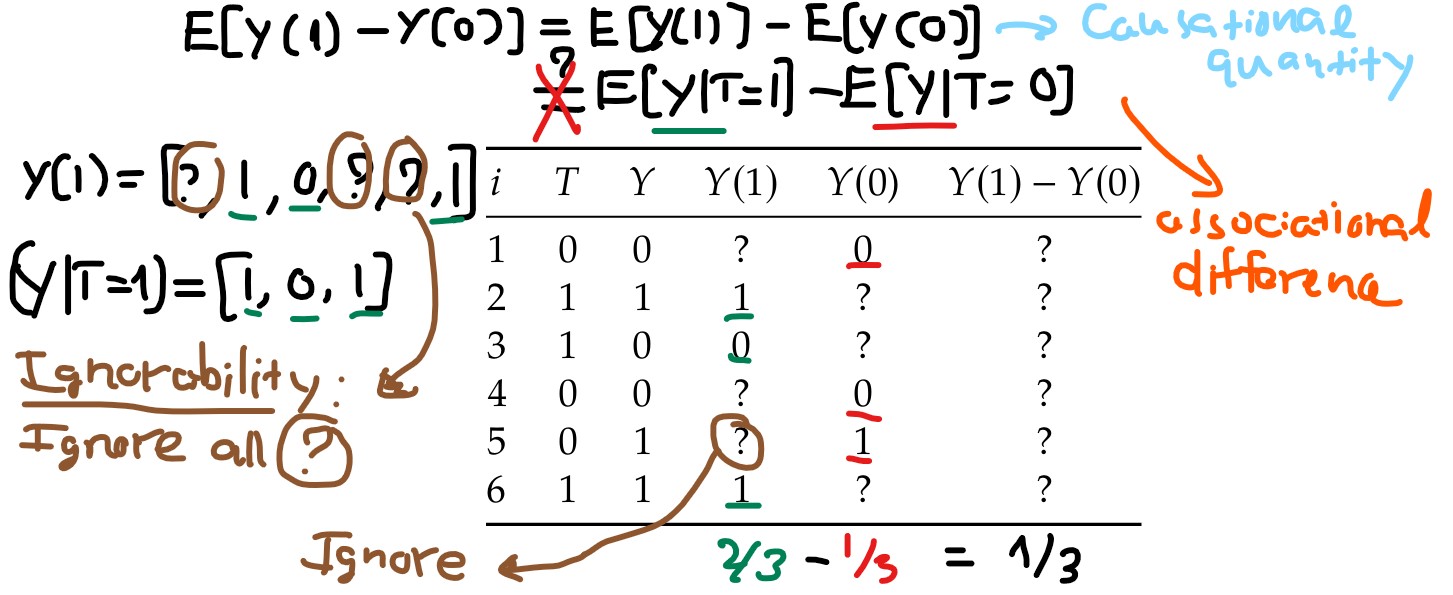When $ Y = 0 $, can’t observe $ Y(1) $, thus
- the potential outcome $ Y(1) $ contains “?” (Outcome if treated),
- $ (Y \mid T = 1) $ contains outcomes when $ T = 1 $ actually happens (Outcome among treated individuals).
Potential outcome $ Y(t) $ denotes what your outcome would be, if you were to take treatment $ t $.
individual $ i $
$$ \boxed{ \tau_i \triangleq = Y_i(1) - Y_i(0) } \tag{2.1} $$
Take the pill: $ T = 1 $; happy $ Y(t) = 1 $
It’s impossible to observe all the potential outcomes for a given individual.
Can’t access ITE, but what abt average treatment effect?
$$ \boxed{ \tau \triangleq E[Y_i(1) - Y_i(0)] = E[Y(1) - Y(0)] } \tag{2.2} $$
How would we actually calculate the ATE? associational difference $ E[Y \mid T = 1] - E[Y \mid T = 0] $ ?
$$ \begin{align*} E[Y(1) - Y(0)] &= E[Y(1)] - E[Y(0)] \quad \text{(linearity)} \\ &=? E[Y \mid Y = 1] - E[Y \mid Y = 0] \end{align*} $$
Unfortunately, this is not true in general
If the equality holds, that would mean that causation is simply association.

When $ Y = 0 $, can’t observe $ Y(1) $, thus